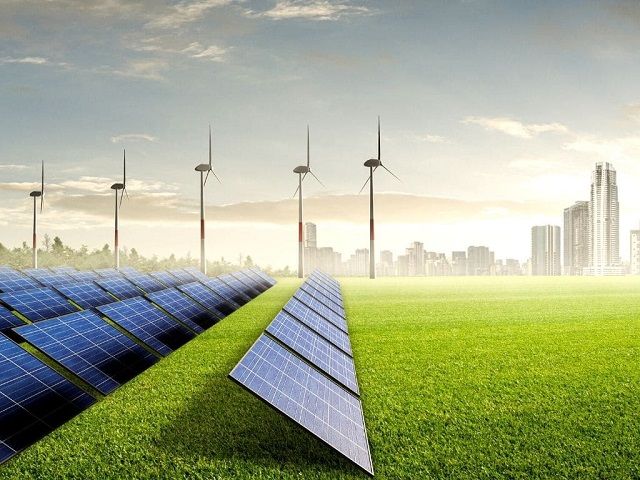Azerbaijan’s green energy ambitions signal strategic shift beyond hydrocarbons

Azerbaijan is rapidly transitioning from its traditional reliance on hydrocarbon resources toward becoming a regional leader in green energy. This shift is not only a response to global climate imperatives but also a strategic move to diversify its economy and strengthen geopolitical ties. By leveraging its geographical position along the energy corridors stretching from China to Europe, Azerbaijan is expanding cooperation with Gulf countries and forging itself as a favorable destination for renewable energy investment.
The first phase of Azerbaijan’s green energy plan, covering 2027 to 2030, aims to bring ten new solar and wind power plants online. This targeted expansion aligns with the government’s broader economic diversification strategy, reflecting a pragmatic approach to gradually reduce dependence on natural gas and oil exports.
Energy Minister Parviz Shahbazov emphasized during Baku Energy Week that integrating 2,700 MW of renewable capacity will save approximately 1.5 billion cubic meters of natural gas annually. This figure underscores the dual benefit of green energy development: it supports domestic energy security by conserving fossil fuel reserves, while enabling increased export potential of hydrocarbons during the transition period.
The establishment of the “Green Energy Space” Sub-Working Group demonstrates Azerbaijan’s commitment to institutionalizing the green agenda. Tasked with integrating lessons from the 2022–2026 Economic Development Strategy and aligning with global trends, the group is pivotal in ensuring coherent policy implementation. This approach reflects an understanding that green energy growth requires not only infrastructure investments but also comprehensive regulatory reforms and coordination across sectors.
The upcoming launch of a 240 MW wind plant, along with the construction of three 200 MW solar parks backed by $2.7 billion in investments, indicates significant capital mobilization. This scale of investment is critical, as it reflects confidence from both domestic stakeholders and international partners in Azerbaijan’s green transition.
By 2027, renewables are expected to constitute 33.7% of installed capacity — a substantial increase that will rise to 38% by 2030 and further to 42.5% by 2035. These targets, while ambitious, are calibrated to balance economic growth with environmental sustainability, signaling Azerbaijan’s intent to remain competitive in the rapidly evolving global energy landscape.
Crucially, Azerbaijan is not just focusing on meeting domestic demand. The planned export of 4 GW of renewable capacity within the next five years, particularly through initiatives like the Caspian-Black Sea-Europe Green Energy Corridor, positions the country as an emerging clean energy exporter. The strategic partnership with Georgia, Romania, and Hungary to construct a submarine power cable under the Black Sea is a clear example of Azerbaijan’s forward-looking vision to integrate its green energy resources into European markets, enhancing energy diversification for both parties.
Regional cooperation extends beyond Europe. Agreements with Kazakhstan and Uzbekistan on green hydrogen and ammonia technologies point to Azerbaijan’s efforts to deepen energy integration across Central Asia and the South Caucasus. This not only broadens export markets but also strengthens regional stability through shared economic interests.
Furthermore, partnerships with Bulgaria, Georgia, and Türkiye highlight a multilateral approach to green energy infrastructure development, reflecting Azerbaijan’s recognition that cross-border collaboration is essential for sustainable energy system modernization.
Azerbaijan’s green energy initiatives represent a carefully crafted balance between ambition and realism. By setting phased targets and establishing dedicated governance structures, the country is demonstrating an awareness of the complexities involved in energy transitions, including financing challenges, technological adaptation, and market integration.
Moreover, the strategy capitalizes on Azerbaijan’s existing geopolitical strengths, turning its transit corridors into conduits for green energy, thereby diversifying not only its energy mix but also its economic and diplomatic relationships.
The emphasis on exports signals a paradigm shift from a solely resource-exporting economy to one that also supplies clean energy — a move that could shield Azerbaijan from volatility in global fossil fuel markets.
However, realizing these ambitions will require sustained political will, continuous reforms, and the ability to attract and manage significant foreign and domestic investments amid global uncertainties.
In conclusion, Azerbaijan’s green energy plans are emblematic of a broader economic transformation — one that seeks to reconcile growth, sustainability, and regional integration. If successful, Azerbaijan could emerge as a pivotal green energy hub bridging Asia and Europe in the decades to come.
Here we are to serve you with news right now. It does not cost much, but worth your attention.
Choose to support open, independent, quality journalism and subscribe on a monthly basis.
By subscribing to our online newspaper, you can have full digital access to all news, analysis, and much more.
You can also follow AzerNEWS on Twitter @AzerNewsAz or Facebook @AzerNewsNewspaper
Thank you!

